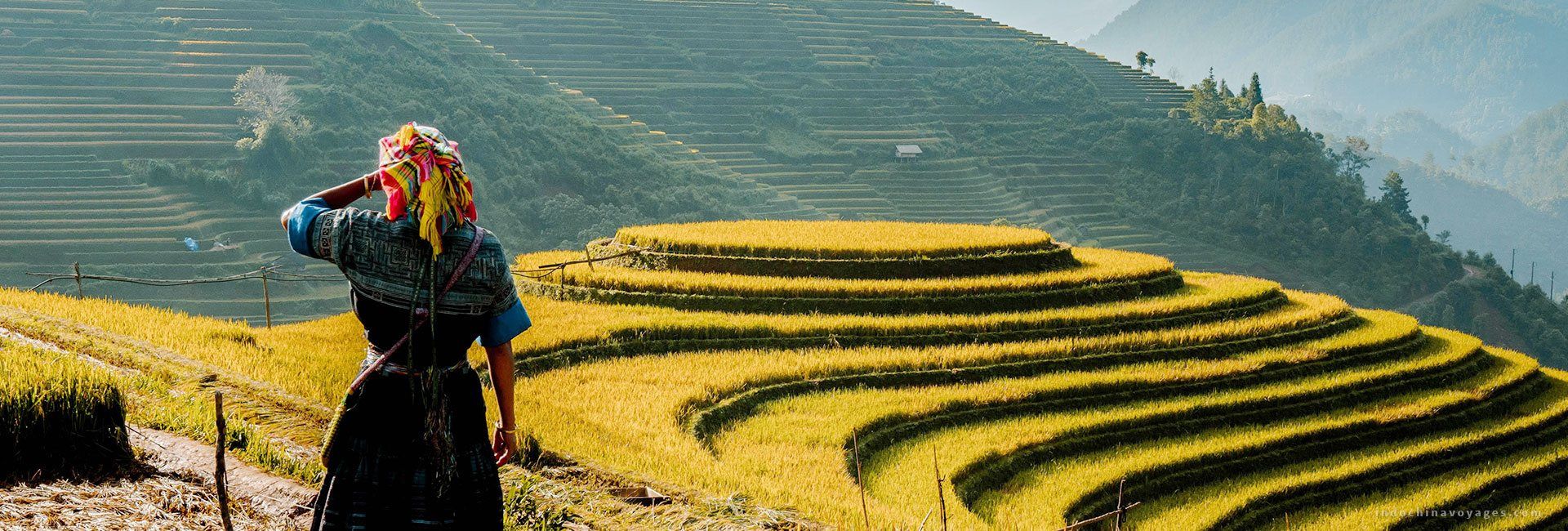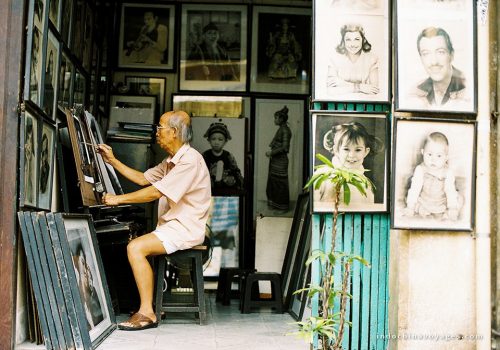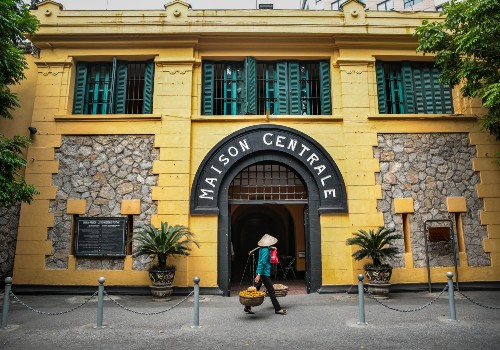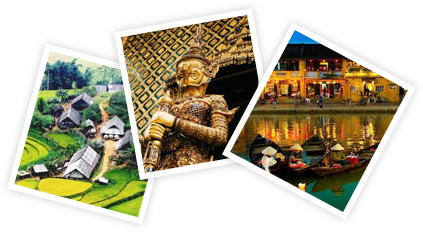Are you eager to embark on an unforgettable trip to Vietnam? Vietnam offers awe-inspiring landscapes, captivating history, and delectable cuisine to satisfy all tastes. However, planning a remarkable trip requires careful planning. In this comprehensive guide, we will answer all your questions about planning a trip to Vietnam. From selecting destinations and transportation to budgeting advice and the best travel seasons. Let’s dive in and start planning your extraordinary Vietnam adventure!
An Overview for First-Time Travelers
Embarking on your inaugural journey to Vietnam? Prepare to be captivated by a land of timeless charm, breathtaking landscapes, and rich cultural tapestry. Before you plan a trip to Vietnam, let’s navigate the essentials to ensure your adventure unfolds seamlessly.
>>> Check out 10 unique places to visit in Vietnam
Understanding Vietnam’s Unique Aspects
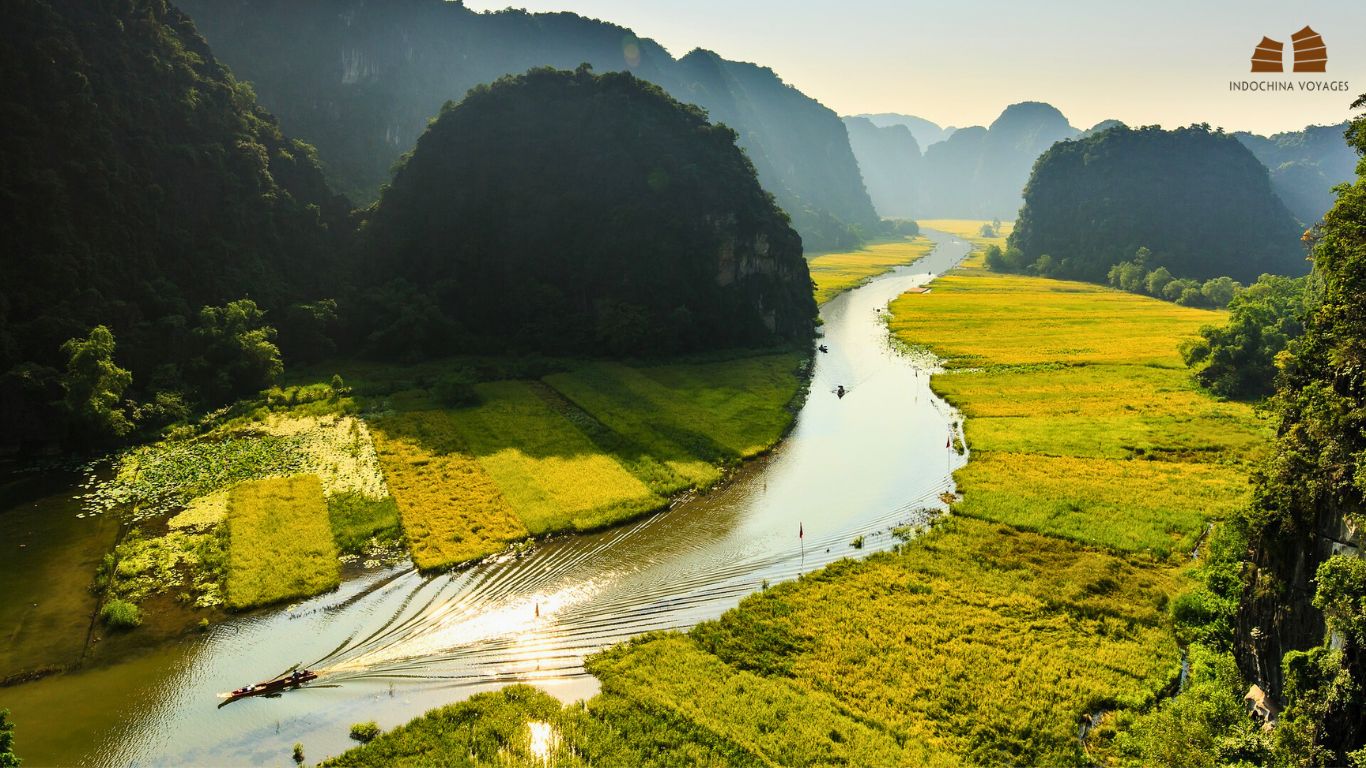
Vietnam, a country steeped in history and tradition, offers a myriad of experiences for intrepid travelers. From the bustling streets of Hanoi to the tranquil waters of Ha Long Bay, each corner of this Southeast Asian gem exudes its distinct charm.
Natural Splendor: Vietnam’s diverse landscapes range from misty mountains and lush rice paddies to pristine beaches and dense jungles. Whether you’re trekking through the terraced fields of Sapa or lounging on the sun-kissed shores of Phu Quoc, nature beckons at every turn.
Warm Hospitality: Experience the legendary hospitality of the Vietnamese people, known for their warmth, generosity, and resilience. From the bustling markets of Saigon to the remote villages of the Mekong Delta, you’ll be welcomed with open arms and infectious smiles.
Exploring Vietnam’s Diverse Regions
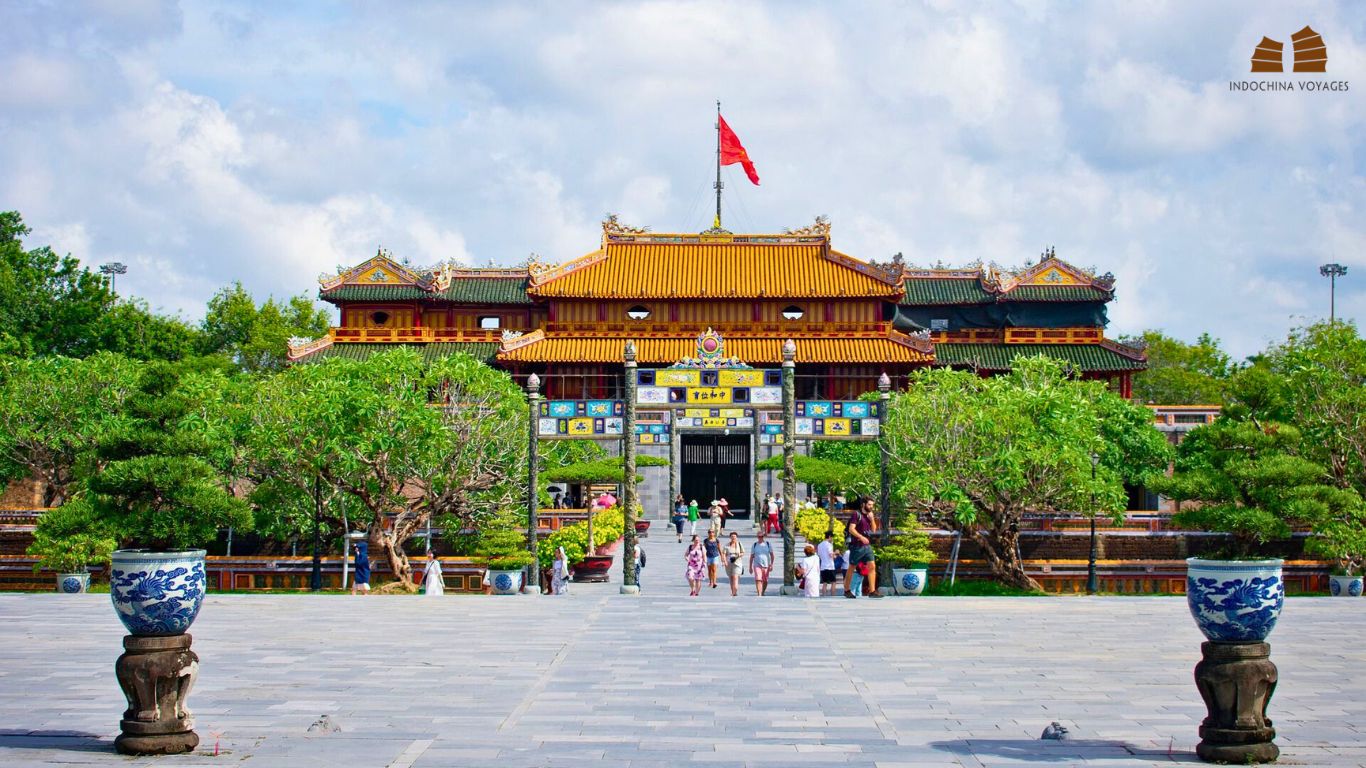
– Northern Vietnam: Begin your journey in the historic capital of Hanoi, where ancient pagodas and colonial architecture coexist in harmony. Explore the labyrinthine streets of the Old Quarter, sample street food delicacies, and embark on a scenic cruise through the iconic limestone karsts of Ha Long Bay.
– Central Vietnam: Journey southward to the central region, where the ancient town of Hoi An awaits with its lantern-lit streets and centuries-old temples. Dive into the region’s rich history at the imperial city of Hue, home to ancient citadels and royal tombs, before soaking up the sun on the pristine beaches of Da Nang and Nha Trang.
– Southern Vietnam: Conclude your adventure in the vibrant metropolis of Ho Chi Minh City, where modern skyscrapers stand juxtaposed against French colonial landmarks. Delve into the city’s tumultuous past at the War Remnants Museum, stroll along the bustling boulevards of Dong Khoi Street, and embark on a culinary journey through the vibrant markets of Ben Thanh.
5 Steps to plan a trip to Vietnam before you go
1. Deciding when to go: Choose the best time to visit Vietnam
Vietnam boasts a diverse climate, with distinct weather patterns across its regions. To start planning a trip to Vietnam, you should choose the best time to visit depending on your preferred activities and destinations.
– High Season (November to April): During these months, you can enjoy pleasant weather, making it perfect for exploring the country’s diverse attractions. However, be prepared for larger crowds and higher prices. Additionally, to make a more informed decision, it’s essential to consider regional variations:
+ Northern Vietnam (Hanoi, Halong Bay, Ninh Binh, Sapa) might experience cooler temperatures during this season.
+ Central Vietnam (Hue and Hoi An) has a tropical climate with a rainy season typically occurring from September to December.
+ Southern Vietnam (Ho Chi Minh City, the Mekong Delta) boasts a consistent tropical climate throughout the year, characterized by high humidity and occasional rainfall.
– Shoulder Season (May to June, September to October): Enjoy fewer crowds and lower prices while still benefiting from favorable weather conditions in many parts of Vietnam. You should pay attention that in the southern part, the rainy season lasts from May to November, with heavy downpours.
– Low Season (July to August): While the south experiences its rainy season, the central and northern regions offer opportunities for budget travelers to explore with fewer tourists and discounted accommodations.
2. Choose where to go
Overview of Vietnam destinations
- Hidden gems and off-the-beaten-path locations
– Ha Giang: It’s a remote and scenic region, less crowded compared to popular tourist destinations. Facilities and amenities may be more basic in rural areas, but the natural beauty and authentic experiences make it worthwhile.
– Cao Bang: It offers natural beauty and cultural experiences. It’s less crowded and retains an authentic charm. Facilities and amenities may be more limited compared to larger cities, but the natural wonders make it worthwhile.
– Con Dao Islands: Indulge in pristine beaches, crystal-clear waters, and vibrant coral reefs on this remote archipelago, perfect for snorkeling, diving, and wildlife spotting.
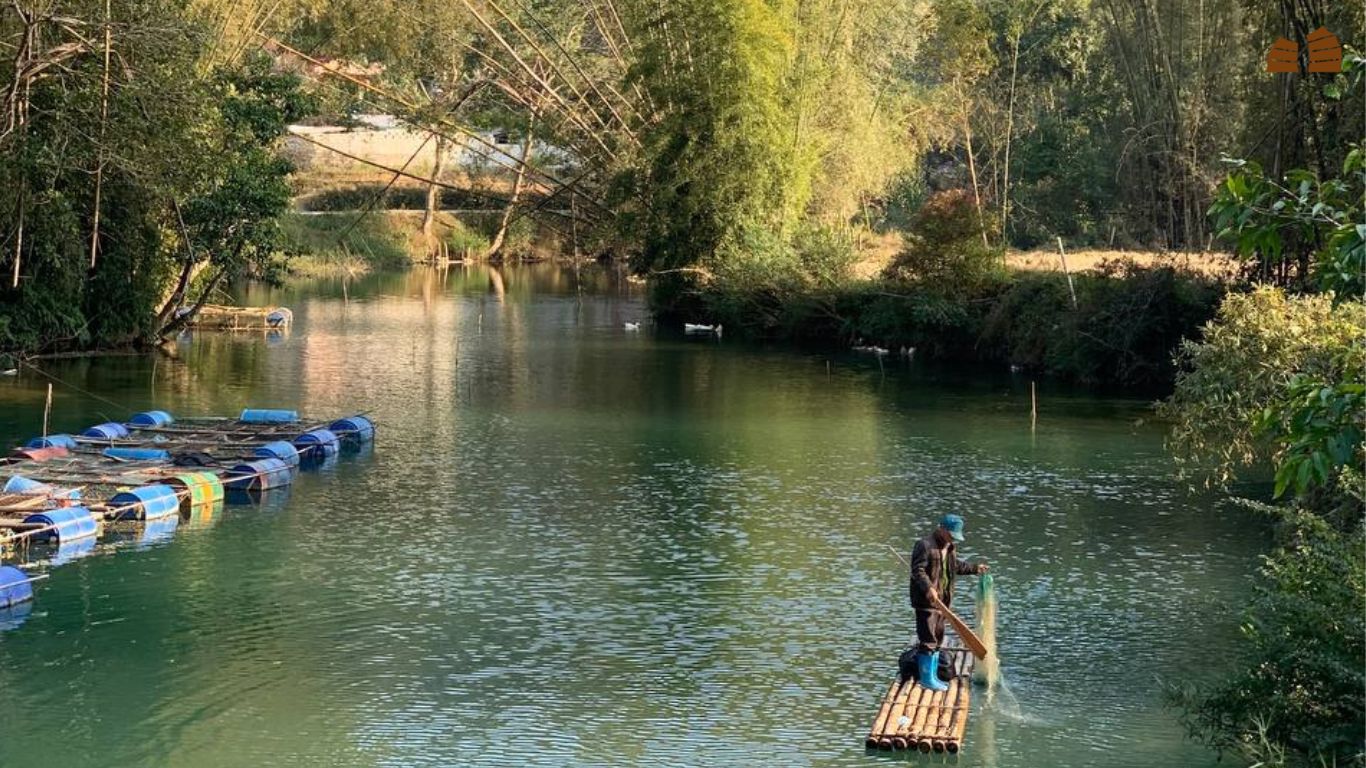
- Destination to immerse in historical and cultural local life
– Hanoi: The capital of Vietnam offers you a blend of ancient traditions and modern influences. Explore the bustling Old Quarter, visit historical sites, traditional markets and witness the vibrant street food scene. It can be crowded, especially during peak tourist seasons, but it provides a fascinating glimpse into the city’s rich past.
– Hue Imperial City: It offers a rich historical experience with its imperial architecture. It’s less crowded compared to other popular tourist destinations. Facilities and amenities are available, although they may be more limited compared to larger cities.
– Hoi An Ancient Town: The central area of the town is particularly popular among tourists, but you can discover hidden gems and tips to avoid the crowds while still experiencing the town’s charm.
>>> Read more: Discover Hidden Gems: 9 Unique Things to do in Hoi An & Tips to beat the crowd
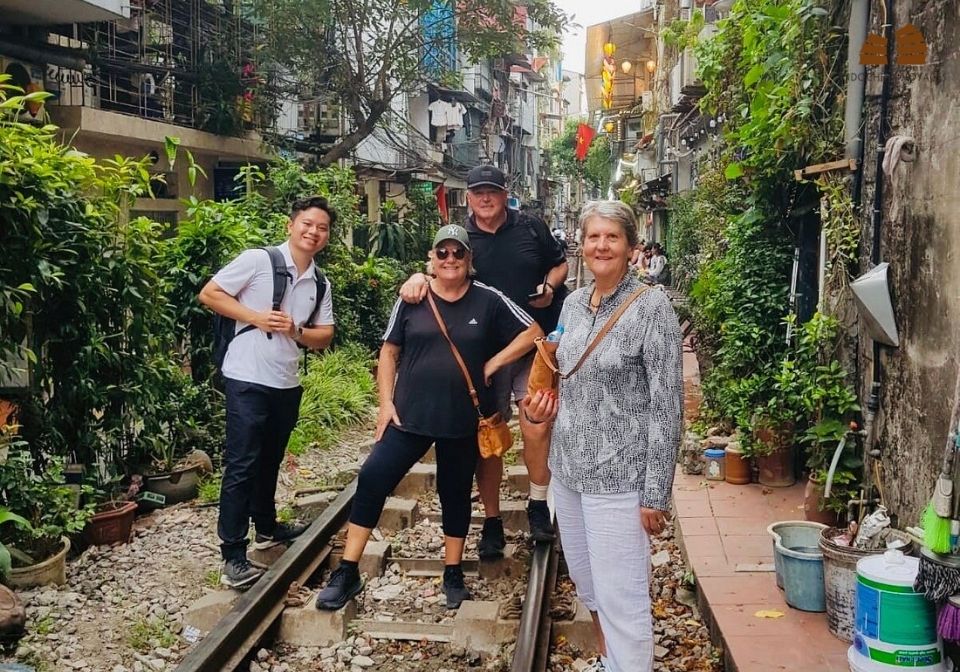
- Places for the best beaches and relaxation:
– Phu Quoc Island and Nha Trang: They have beautiful beaches and a lively beachfront scene with resorts, but they have become increasingly popular in recent years, attracting more tourists. Facilities and amenities have improved, but some areas can be crowded during peak seasons.
– Da Nang: The beaches are clean, and there are luxury resorts and facilities available. It strikes a balance between relaxation and cultural exploration. Facilities and amenities are generally good, and it’s less crowded compared to other popular beach destinations.
– Mui Ne: It offers unique sandy dunes and is popular for water sports like kiteboarding. It has a relaxed atmosphere and fewer crowds compared to other beach destinations. Facilities and amenities are available but may be more limited compared to larger cities.
Must-See Places in Vietnam for First-Timers
| Place | Highlights | Great for |
| Sapa | Trek through breathtaking rice terraces, encounter colorful hill tribes, and experience stunning mountain scenery. | Hiking & Trekking, Hill tribe villages, Nature lovers |
| Ninh Binh | Tranquil natural beauty, winding rivers, towering limestone mountains, and rice paddies. Enjoy boat tours through caves, cycle the countryside, or climb mountain peaks. | Scenic boat tours, Cycling adventures, Mountain climbing |
| Halong Bay | Cruise amidst dramatic limestone pillars jutting from emerald waters. Explore hidden caves and lagoons. | Breathtaking scenery, Kayaking, Cave exploration |
| Hue | Visit the Citadel and Forbidden City, remnants of the Nguyen Dynasty. Delve into Vietnamese culture and religion at tombs, pagodas, and temples. | Imperial history, Royal Tombs, Historical Sites |
| Hoi An | Explore this charming ancient town with its colorful tailor shops, Japanese covered bridges, and delicious street food. | Tailored clothing, Hoi An Old Town, Riverside vibes |
| Ho Chi Minh City (Saigon) | Immerse yourself in the dynamic energy of Vietnam’s largest city. Explore historical landmarks, bustling markets, and delicious cuisine. | War history museums, Cu Chi Tunnels, Bustling city life |
| Mekong Delta | Explore the Mekong Delta’s network of waterways. Visit traditional houses on stilts, and gain a deeper understanding of southern Vietnam’s lifestyle. | River cruises, Floating markets, Local villages, Fruit orchards |
3. How long should you spend in Vietnam?
– For first-time visitors: A recommended duration would be around 10 to 14 days. This timeframe allows you to experience the country’s highlights, and explore some of the most popular destinations.
– 10-12 days: You can cover some of the highlights of Vietnam, such as Hanoi, Halong Bay, Hoi An, and Ho Chi Minh City. It allows for a good balance between immersing yourself in the culture, visiting popular attractions, and enjoying leisure time.
>>> See tour: Classic Adventure Vietnam 12 Days
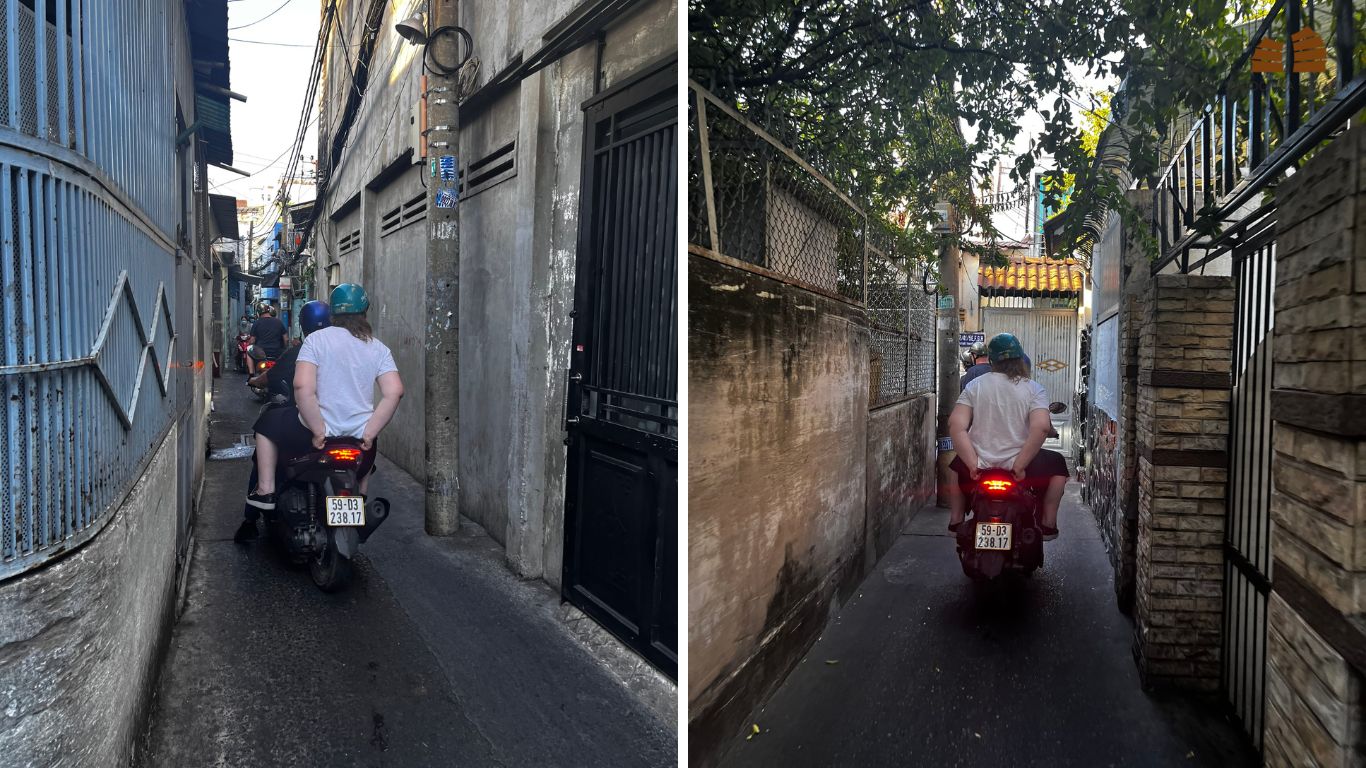
– 15 days: This duration provides a bit more flexibility and allows for a deeper exploration of Vietnam. In addition to the aforementioned destinations, you can also include places like Sapa, Hue, and the Mekong Delta region. It gives you more time to savor the local experiences and venture off the beaten path.
>>> See tour: Vietnam Cultural Highlights 14 Days
– 3 weeks or longer: If you are a cultural, history & local learner and have more time to spare, extending your trip to 2-3 weeks or even longer allows for a comprehensive exploration of Vietnam. You can delve deeper into each destination, visit lesser-known areas like Ha Giang or Cao Bang, and engage in activities like trekking in the mountains, exploring the Central Highlands, and relaxing on the beaches of Nha Trang or Phu Quoc.
>>> See tour: Beyond the Ordinary: Vietnam 3 Week Itinerary North to South
4. Estimate your trip cost
Budgeting for your Vietnam trip involves considering various factors, including transportation, accommodation, food, activities, and souvenirs.
- Internation flight
The cost of international flights can vary significantly depending on your departure location, airline, and the time of year you plan to travel. It’s recommended to compare prices from different airlines and book in advance to secure the best deals.
- Domestic flight
The cost of domestic flights will depend on the distance and specific routes. As a rough estimate, one-way domestic flights within Vietnam can range from $80 to $160 or more, depending on the airline and the popularity of the route.
- Accommodation
The cost of accommodation in Vietnam can vary depending on the type of accommodation, location, and quality. Here’s a general range of accommodation costs per night:
– Budget: $10 to $30 for guesthouses, hostels, or budget hotels.
– Mid-range: $50 to $120 for comfortable hotels or boutique accommodations.
– Luxury: US$150 to US$200 or more for high-end hotels or luxury resorts.
- Food
Street food and local eateries offer delicious and affordable meals ranging from US$1 to US$4 per dish. Mid-range restaurants and international cuisine can cost between US$5 and US$20 per meal. Dining at upscale establishments can cost $20 or more per person.
- Tour Cost
Depending on the type of tour, duration, number of people, and the level of comfort and luxury, here’s a general breakdown of the approximate costs for different types of tours in Vietnam:
– Medium budget: Around US$200–250 per person per day.
– Higher budget: Approximately US$250–350 per person per day.
– Family trip (2 adults and 2-3 children): Typically, it costs US$8,000–15,000 for a 2-week tour, excluding international flights.
5. Transportation
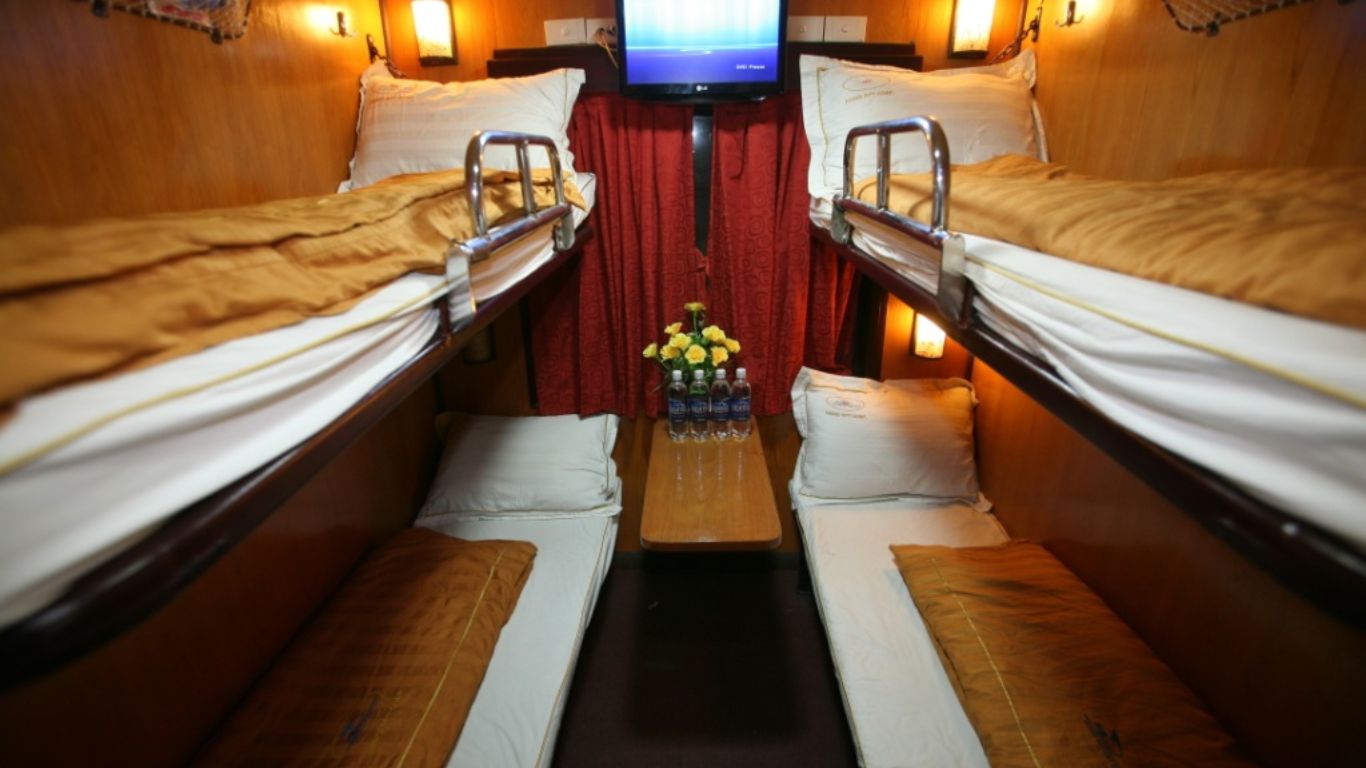
- Domestic flight
– Time Efficiency: Domestic flights are ideal for covering long distances quickly, allowing you to maximize your time and explore more destinations.
– Accessibility: Vietnam’s major cities, such as Hanoi, Ho Chi Minh City, Da Nang, and Nha Trang, are well-connected by domestic flights operated by reputable airlines like Vietnam Airlines, VietJet Air.
- Train
– Scenic Journeys: Traveling by train offers a unique opportunity to admire Vietnam’s stunning landscapes, from verdant rice paddies to rugged mountains and coastal vistas.
– Comfort Options: Choose from various classes of train travel, including hard seat, soft seat, and sleeper cabins, to suit your comfort preferences and budget.
– Popular Routes: The North-South Reunification Line, which runs from Hanoi to Ho Chi Minh City, is one of Vietnam’s most popular train routes, offering a memorable cross-country journey.
- Buses/ taxi
– Affordability: Buses are a budget-friendly option for traveling between cities and provinces in Vietnam, with numerous routes and operators available.
– Convenience: Bus stations are conveniently located in most major cities and towns, providing easy access to transportation hubs and tourist attractions.
– Comfort considerations: While budget buses offer basic amenities, such as reclining seats and air conditioning, luxury sleeper buses provide added comfort with spacious beds for overnight journeys.
- Private transport
– Flexibility: Hiring a private car or van with a driver offers flexibility and convenience, allowing you to tailor your itinerary and explore off-the-beaten-path destinations at your own pace.
– Customized Tours: Many tour operators in Vietnam offer private transport services as part of customized tour packages, which include knowledgeable guides and curated experiences tailored to your interests.
– Safety Assurance: With a local driver at the wheel, you can relax and enjoy the scenery without worrying about navigation or road conditions, ensuring a safe and stress-free journey.
6. Check Out Vietnam’s Visa Policy
- Visa Exemptions
Vietnam offers visa exemptions for citizens of certain countries, allowing them to enter Vietnam for a specified period without a visa. The duration of visa exemptions varies depending on the nationality and bilateral agreements between Vietnam and other countries. Commonly exempted nationalities include citizens of ASEAN countries, South Korea, Japan, and several European countries. Check the latest list of visa-exempt countries on the official website of the Vietnamese Immigration Department.
- Visa On Arrival
For travelers who require a visa to enter Vietnam but don’t have time to apply for one in advance, the visa on arrival (VOA) option is available. VOA allows you to obtain a visa upon arrival at designated international airports in Vietnam, including Hanoi, Ho Chi Minh City, and Da Nang. To apply for a VOA, you’ll need to obtain a pre-approved visa letter from a reputable visa agency or tour operator before your arrival. Present the letter, along with your passport, visa application form, and visa fee, at the visa on arrival counter upon landing in Vietnam.
- E-Visa
Vietnam also offers an electronic visa (e-visa) option for travelers who prefer to apply for a visa online in advance. The e-visa is a single-entry visa valid for up to 30 days and can be used for tourism, business, or visiting relatives. To apply for an e-visa, visit the official website of the Vietnamese Immigration Department and follow the instructions to fill out the online application form. After submitting the application and paying the processing fee, you’ll receive the e-visa via email within a specified timeframe.
- Embassies and Consulates
If you prefer to apply for a visa through traditional means, you can visit a Vietnamese embassy or consulate in your home country. Contact the nearest embassy or consulate for information on visa application requirements, processing times, and fees. Prepare the necessary documents, including your passport, visa application form, passport-sized photos, and supporting documents, and submit them to the embassy or consulate for processing. Once approved, your visa will be stamped in your passport, allowing you to enter Vietnam.
Things to know once you’re in Vietnam
Arrival
- Customs Declaration
Complete a customs declaration form upon arrival, declaring any dutiable goods or foreign currency exceeding $5,000 USD.
- Airport Transfer
Arrange transportation from the airport to your accommodation in advance to avoid scams and ensure a smooth arrival. Many hotels offer airport transfer services, or you can book a reputable taxi or ride-sharing service.
Sanitary situations
- Toilets
Public restrooms in Vietnam vary in cleanliness and availability. Carry sanitizing wipes and toilet paper with you, especially when exploring tourist sites or traveling long distances.
- Water Quality
While bottled water is widely available and safe to drink, consider using a water purifier or carrying a reusable water bottle with a built-in filter to reduce plastic waste and ensure access to clean drinking water.
- Food Quality
Enjoy Vietnam’s diverse cuisine, but be cautious when dining at street stalls or local eateries. Choose restaurants with high turnover rates and observe hygiene standards to avoid foodborne illnesses.
Customs Regulations and Tips
- Cultural Sensitivity
Respect Vietnamese customs and traditions during your stay. Remove your shoes before entering someone’s home or temple, dress modestly when visiting religious sites, and be mindful of local customs and etiquette.
- Currency Exchange
Exchange currency at authorized banks or exchange counters to get the best rates. Carry small denominations of Vietnamese dong for everyday transactions, as many vendors may not accept large bills.
- Bargaining
Bargaining is common in Vietnam, especially at markets and street vendors. Approach negotiations with a friendly attitude, but be prepared to walk away if you can’t agree on a price.
Extra information
- Plugs & Electricity
When it comes to electrical outlets in Vietnam, the standard voltage is 220V, with a frequency of 50Hz. The most common plug types are the Type A, Type C, and Type F sockets. It’s advisable to bring a universal adapter if your devices use different plug types.
>>> Read more: Vietnam Electricity Voltage: Don’t Forget These Voltage Essentials!
- Money Matters
Vietnam primarily uses the Vietnamese dong (VND) as its currency. While credit cards are widely accepted in tourist areas and major cities, it’s always a good idea to carry some cash for smaller purchases and transactions. ATMs are plentiful in urban centers, allowing you to withdraw cash conveniently. However, be cautious of ATM fees and choose reputable banks to avoid scams.
- Tipping
Tipping is not a common practice in Vietnam, especially in local establishments. However, it’s appreciated in upscale restaurants and for exceptional service. A tip of 5-10% of the total bill is considered generous in these situations. Always check if a service charge is included in your bill before tipping.
- Crossing the street
Navigating the bustling streets of Vietnam can be an adventure in itself, especially when it comes to crossing the road. Traffic can be chaotic, with a constant flow of motorbikes and vehicles. The key to crossing safely is to move slowly and steadily, making eye contact with drivers to gauge their intentions. When in doubt, follow the lead of locals and cross in groups.
- Phone/ sim card/ internet access and mobile data options in Vietnam
Staying connected in Vietnam is easy, thanks to the widespread availability of SIM cards and affordable mobile data plans. Upon arrival, you can purchase a local SIM card from official telecom providers such as Viettel, Vinaphone, or Mobifone. These SIM cards typically come with various data packages to suit your needs, allowing you to stay connected and share your adventures with ease.
>>> Read more: How to buy and use Vietnam SIM card in 2024?
Once you have gained sufficient knowledge on how to plan a trip to Vietnam, you can use this guide as your reliable companion to explore the various experiences that await you in this beautiful country.
If you have any questions or wish to book a customized vacation package in Vietnam, feel free to contact Indochina Voyages through email at info@indochinavoyages.com. Our experienced travel consultants are passionate about helping you create the perfect itinerary to turn your dream vacation into a reality.

